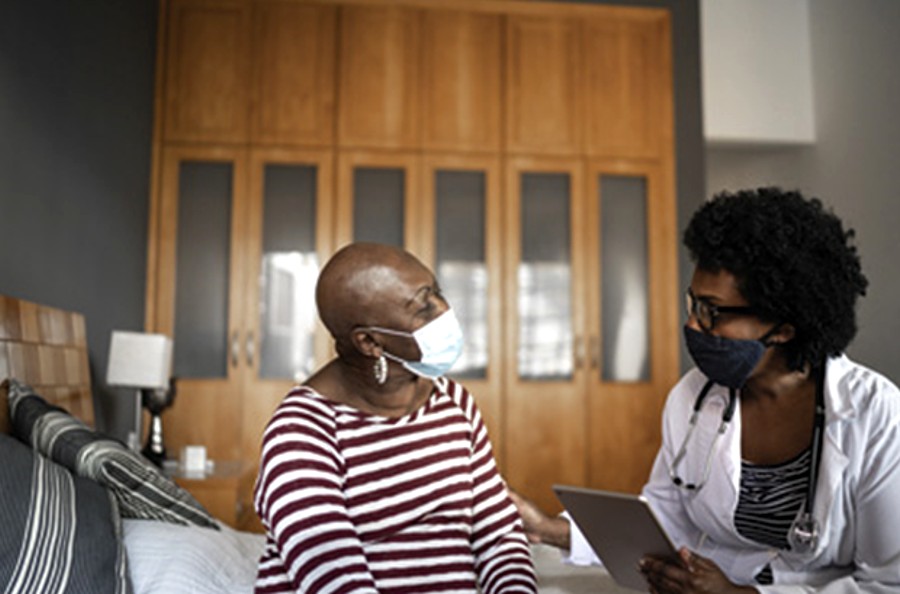
When we came into office, we promised that we would ensure that our prosperity would be felt across the five boroughs. And the health of our people is key to that prosperity.
But despite coming out of a once-in-a-century pandemic, life expectancy in this city has not fully recovered. Between 2019 and 2020, overall life expectancy in New York City fell to 78 years. So, it is time we gave New Yorkers some extra life.
That is why we recently launched HealthyNYC, our ambitious plan to extend and improve the lifespan of all New Yorkers to 83 years by 2030. HealthyNYC sets clear goals to reduce the greatest drivers of premature death, including chronic and diet-related diseases, overdose, suicide, maternal mortality, violence, and COVID-19.
Pill boxes, injections, and doctor’s appointments should not define the lives of New Yorkers — we can and we must invest in helping all New Yorkers enjoy healthier, quality lives. This is personal to me. I have seen up close how chronic disease can hijack your life. Many New Yorkers know my personal story, but they don’t know my mother’s story. Dorothy Adams was a diabetic for 15 years, and I watched her inject herself with insulin for seven of those years. But she changed her diet and her lifestyle, and she was able to live until she was 83. I believe if we had caught the chronic diseases she was facing earlier, she would have been with us even longer.
Many New Yorkers have someone in their life impacted by a chronic disease, by addiction, by cancer. They worry about the next examination, the next injection. New Yorkers shouldn’t face anxiety and worry about their health and the health of their families. With HealthyNYC, we are going to refocus our public health work around the goal of helping people live longer lives.
And we are going to do that by addressing health inequities in our Black and Brown communities. This includes increasing access to quality health care to reduce pregnancy-associated mortality among Black women, through programs like our citywide doula initiative.
We also know that unhealthy foods — fast food, processed foods, and sugary drinks — contribute to chronic diseases. Much of the problem lies in the fact that oftentimes, only higher-income neighborhoods have access to healthy food and the Whole Foods of the world, while our low-income neighborhoods are left with junk food options. Eighty percent of health care dollars in America go toward treating diet-related chronic diseases that these kinds of foods fuel. We don’t want to keep feeding this crisis, so we are going to increase access to healthy foods and promote plant-forward diets to reduce chronic and diet-related disease deaths.
Through HealthyNYC, we are also going to expand access to mental health care and social support services, including early intervention for communities of color and LGBTQIA+ youth, as well as address the impact of social media on youth mental health and suicidal ideation to reduce suicide deaths.
Additionally, we are going to take on the overdose crisis in our city. New York City has lost too many people to overdoses. Too many families and communities have faced the pain and heartache of seeing a loved one go through addiction. So, we are going to increase access to proven harm-reduction and treatment and recovery centers to reduce overdose deaths.
Increasing life expectancy across our city is an all-hands-on deck moment because every New Yorker deserves a healthier, longer life. With HealthyNYC, we are going to build a healthier, more prosperous city for all.
- LISC CEO Michael T. Pugh Recognized Among 2024 Worthy 100 Leaders
- NY Lawmakers Celebrate Historic MENA Data Recognition Bill Signed By Hochul
- Sponsored Love: Leadership Skills Training Courses: Invest In Your Future Today
- Senator Hoylman-Sigal Calls On Independent Schools To Adopt NYC Public School Calendar
- Mayor Adams Celebrates 65 Million NYC Visitors In 2024, Second-Highest Ever
Become a Harlem Insider!
By submitting this form, you are consenting to receive marketing emails from: . You can revoke your consent to receive emails at any time by using the SafeUnsubscribe® link, found at the bottom of every email. Emails are serviced by Constant Contact









